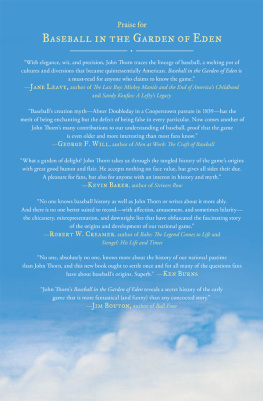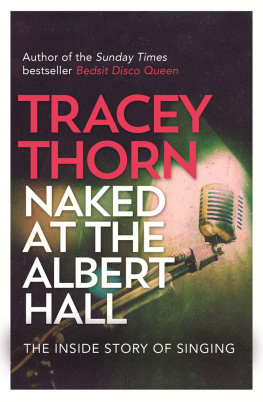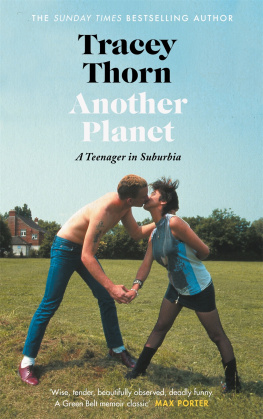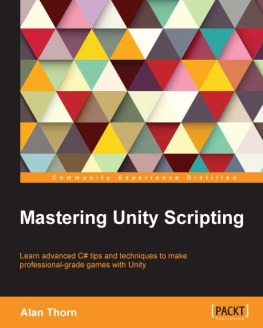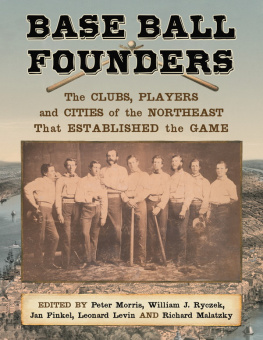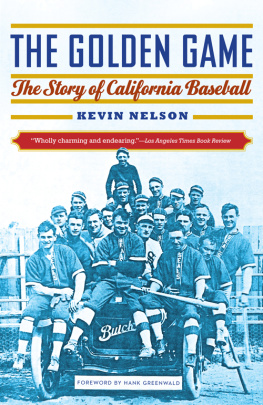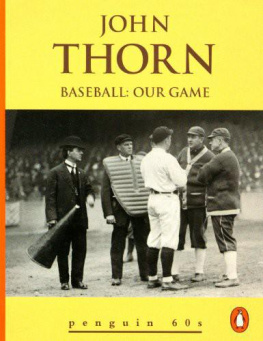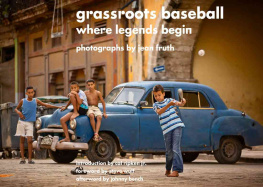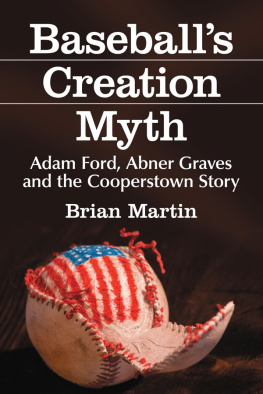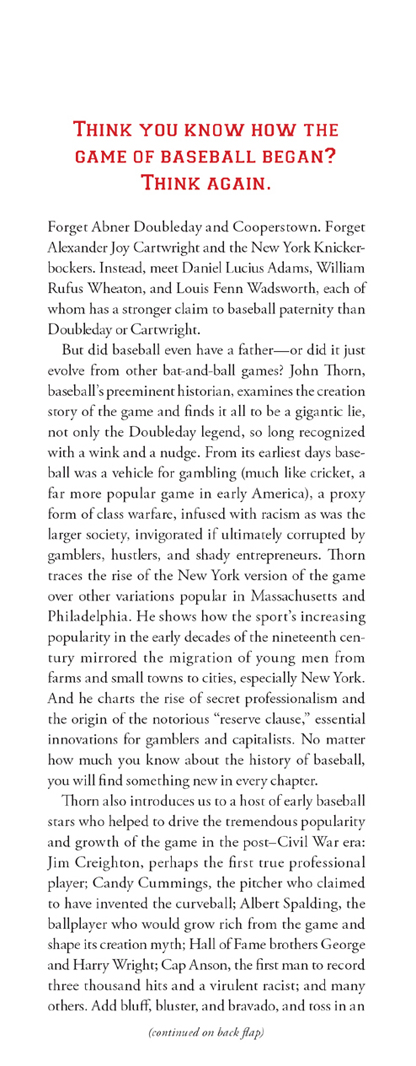

ALSO BY JOHN THORN
New York 400: A Visual History of Americas Greatest City with
Images from the Museum of the City of New York
The Glory Days: Baseball in New York City 19471957 (with the Museum of the City of New York)
Total Baseball, Eighth Edition (with Phil Birnbaum and Bill Deane)
Total Football, Second Edition (with Bob Carroll, Michael Gershman, and David Neft)
Total Browns (with Bob Carroll, Michael Gershman, and David Neft)
Total Steelers (with Bob Carroll, Michael Gershman, and David Neft)
Total Packers (with Bob Carroll, Michael Gershman, and David Neft)
Total Cowboys (with Bob Carroll, Michael Gershman, and David Neft)
Total 49ers (with Bob Carroll, Michael Gershman, and David Neft)
Treasures of the Baseball Hall of Fame
Total Baseball Catalog (with Bob Carroll, David Pietrusza, and Lloyd Johnson)
Total Mets (with Pete Palmer, Michael Gershman,
David Pietrusza, and Matt Silverman)
Total Braves (with Pete Palmer, Michael Gershman,
David Pietrusza, and Dan Schlossberg)
Total Indians (with Pete Palmer, Michael Gershman,
David Pietrusza, and Paul Hoynes)
Baseball: Our Game
Ted Williams: Seasons of the Kid (with Richard Ben
Cramer, Dan Okrent, and Mark Rucker)
The Official Major League Baseball Record Book (with Pete Palmer)
The Football Abstract (with Pete Palmer and Bob Carroll)
The Hidden Game of Football (with Bob Carroll and Pete Palmer)
The Armchair Traveler (with David Reuther)
The Pitcher (with John Holway)
The Armchair Book of Baseball II
The National Pastime
The Armchair Book of Baseball
The Hidden Game of Baseball (with Pete Palmer)
The Armchair Mountaineer (with David Reuther)
The Armchair Aviator
The Armchair Quarterback
Pro Footballs Ten Greatest Games
Baseballs Ten Greatest Games
The Relief Pitcher
A Century of Baseball Lore


| Simon & Schuster
1230 Avenue of the Americas
New York, NY 10020
www.SimonandSchuster.com |
Copyright 2011 by John Thorn
All rights reserved, including the right to reproduce this book or portions thereof in any form whatsoever. For information address Simon & Schuster Subsidiary Rights Department, 1230 Avenue of the Americas, New York, NY 10020.
First Simon & Schuster hardcover edition March 2011
SIMON & SCHUSTER and colophon are registered trademarks of Simon & Schuster, Inc.
The Simon & Schuster Speakers Bureau can bring authors to your live event.
For more information or to book an event contact the Simon & Schuster Speakers Bureau at 1-866-248-3049 or visit our website at www.simonspeakers.com .
Designed by Level C
Manufactured in the United States of America
10 9 8 7 6 5 4 3 2 1
Library of Congress Cataloging-in-Publication Data
Thorn, John
Baseball in the Garden of Eden : the secret history of the early game / John Thorn.
p. cm.
Includes bibliographical references and index.
1. BaseballUnited StatesHistory19th century. I. Title.
GV863.A1T458 2011
796.357097309034dc22 2010045155
ISBN 978-0-7432-9403-4
ISBN 978-1-4391-7021-2 (ebook)
Some of the material herein first appeared in Base Ball: A Journal of the Early Game, published by McFarland & Co. It is reprinted here in substantially modified form with the kind permission of the publishers.
Without speculation there is no good and original observation.
Letter from Charles Darwin to Alfred Russel Wallace,
December 22, 1857
CONTENTS
INTRODUCTION
of history in Jane Austens Northanger Abbey , heroine Catherine Morland comments, I often think it odd that it should be so dull, for a great deal of it must be invention.
Indeed. And in no field of American endeavor is invention more rampant than in baseball, whose whole history is a lie from beginning to end, from its creation myth to its rosy models of commerce, community, and fair play. The games epic feats and revered figures, its pieties about racial harmony and bleacher democracy, its artful blurring of sport and businessall of it is bunk, tossed up with a wink and a nudge. Yet we love both the game and the flimflam because they are both so... American. Baseball has been blessed in equal measure by Lincoln and by Barnum.
Miss Austens novel, written in 1798, but published posthumously twenty years later, is today well known in baseball-history circles not for the passage above but for this one:
base ball, riding on horseback, and running about the country at the age of fourteen, to booksor at least books of information....
, when Robert W. Henderson of the New York Public Library called public attention to this Austen reference to baseball, and to an even earlier woodcut of the game in John Newberys A Little Pretty Pocket-Book (1744), few Americans knew that English boys and girls had played a game called baseball , whatever its rules may have been. Magnanimously, we had granted the Brits their primacy in cricket; some American cosmopolites might go so far as to acknowledge a playing-fields link between their national game and ours perhaps, as the early sportswriter Henry Chadwick claimed, through roundersbut baseball, well, that was our game .
A special commission constituted by sporting-goods magnate Albert Goodwill Spalding affirmed in 1908, after nearly three years purported study of the games true origin, that baseball was assuredly American for it had been created from the fertile brain of twenty-year-old Abner Doubleday in Cooperstown, New York, in 1839. Critics of the commissions methods and conclusions soon made an alternative case for the genius of Alexander Cartwright and the Knickerbocker Base Ball Club, founded in New York in 1845. Weary after decades of Americas jingoistic rodomontade, the British gallantly departed the field, never having comprehended what the whole fuss was about (its just rounders, you know).
Responding to Hendersons conclusion that baseball was made in England, John Kieran wrote in his April 11, 1937, column for the New York Times:
in far-off fields Elysian,
Your claim to fame is called a foul by later-day decision.
Some prying archeologists have gone and found some traces
Of baseball footprints ages old in sundry English places.
Dryly, Kieran proposed that in view of the enjoyment which we in this country derive from baseball, it would be a sporting gesture to let the English inventors know that we are very much obliged to them.
However, with publication of the commissions report in the spring of 08, followed shortly by Chadwicks death from complications of a cold aggravated by his ill-advised attendance at a drizzly Opening Day, the contest as to who invented baseball had ceased to be one of national origin. It soon boiled down to a two-man affair, both contestants American. Doubleday, whose dossier bore an official stamp, took the lead over the late-to-the-fair Cartwright and has held it, except among knowledgeable fans, to the present day.
Next page
